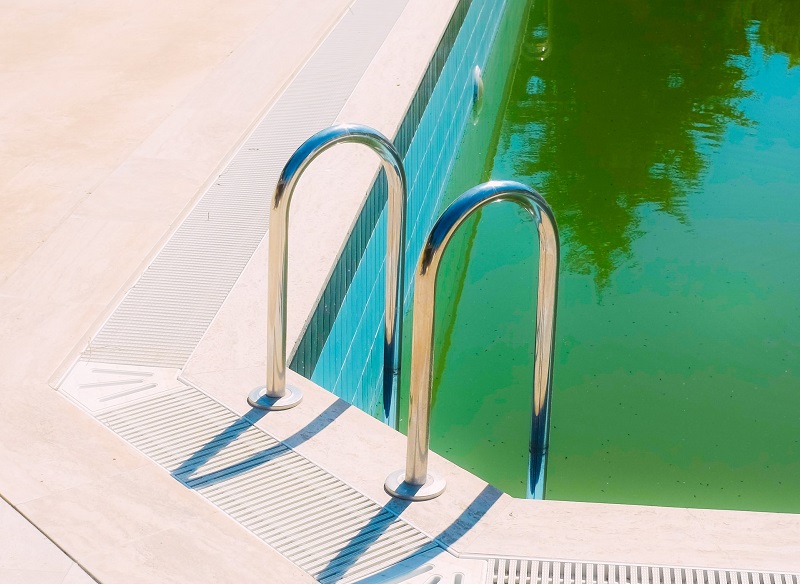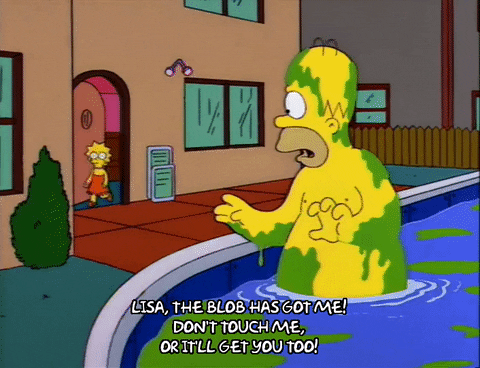There are several different types of algae and they all have one thing in common: they can be a big pain to pool owners! If left unchecked, algae can go from a few spots or cloudy water to a full blown bloom. Fortunately, a smart pool monitor can tell you exactly when you need to take action to get rid of algae in pools.
Let’s look at the most common types of algae and how to both treat and prevent them so that you can spend less time and money fighting blooms and more time enjoying your pool.
Types of algae


Yellow (mustard) algae
Mustard algae is usually found in southern climates and often mistaken for pollen or sand as it isn’t slimy like green algae. It’s chlorine-resistant, can live outside of your pool on equipment, and can even hitch a ride on your swimsuit!
Green algae
This is the most common algae that plagues pool owners, but fortunately it’s also the easiest to kill. Green algae in pool water can make your pool cloudy and/or have a green color to the water. It can also stick to pool walls and floors and show as spots.
It can be introduced by swimwear and toys that have been exposed to algae in natural bodies of water like lakes and ponds, and it can be introduced by sharing pool equipment between contaminated pools.
Black algae
This is the worst of them all and it’s not even algae, it’s actually a cyanobacteria which means it can produce its own food and multiply. It likes to plant roots (literally) in concrete and can be a fierce opponent. If you don’t get the roots then it will grow back quickly and continue to haunt you.
How to kill algae and prevent it from coming back


Once you have determined what kind of unwelcomed guest you have, there are multiple ways to clear your pool depending on the type and severity of the infestation. Ridding yourself of these little demons will take work, patience, and attention to detail but you can do it!
6 steps to kill and remove algae
- Manually vacuum algae to waste and brush your pool walls and floor. You want to remove as much as you can and break the algae up so that the chlorine can do its job.
- Clean everything that has been in the water with a 1:10 diluted household bleach solution, or throw it in the shallow end of the pool to clean it while you shock.
- Test your water and balance it so that your shock treatment will be more effective.
- OK, this step is really important so pay attention. Depending on what kind of algae you have, you will need to adjust your shock level accordingly. You should also factor in how bad the outbreak is, the worse it is then the more chlorine to hit it with. A good tip is to do your shock at night so the sun doesn’t impact your chlorine.
- Green Algae = double shock concentration
- Yellow or heavy green outbreak = triple shock concentration
- Black = nuclear option, 4x shock concentration! Seriously, it’s bad stuff
- Once your water turns to a cloudy blue color that means that you are almost there! Run your filter constantly to remove the dead algae until your water clears.If you are in a hurry, you may want to add a clarifier to help speed things along. Or, if the outbreak was bad enough, you may want to flocculant to drop everything to the pool floor and then vacuum to waste.
After your water is clear, you should clean your filter to remove the dead algae.
Prevention
Prevention is actually simple. The best way to prevent algae from ruining your weekend again is to keep your water balanced and make sure you always have enough chlorine in your water. You can also use algaecide as a backup to help deter growth and make algae more susceptible to chlorine so it can kill the algae. This is especially useful if you will be away from your pool on vacation or if you are closing it for the winter.
Sutro can help you keep your pool an algae-free zone by automatically testing your water daily and providing treatment recommendations. With Sutro keeping an eye on your water chemistry algae will not ruin your weekend again!
